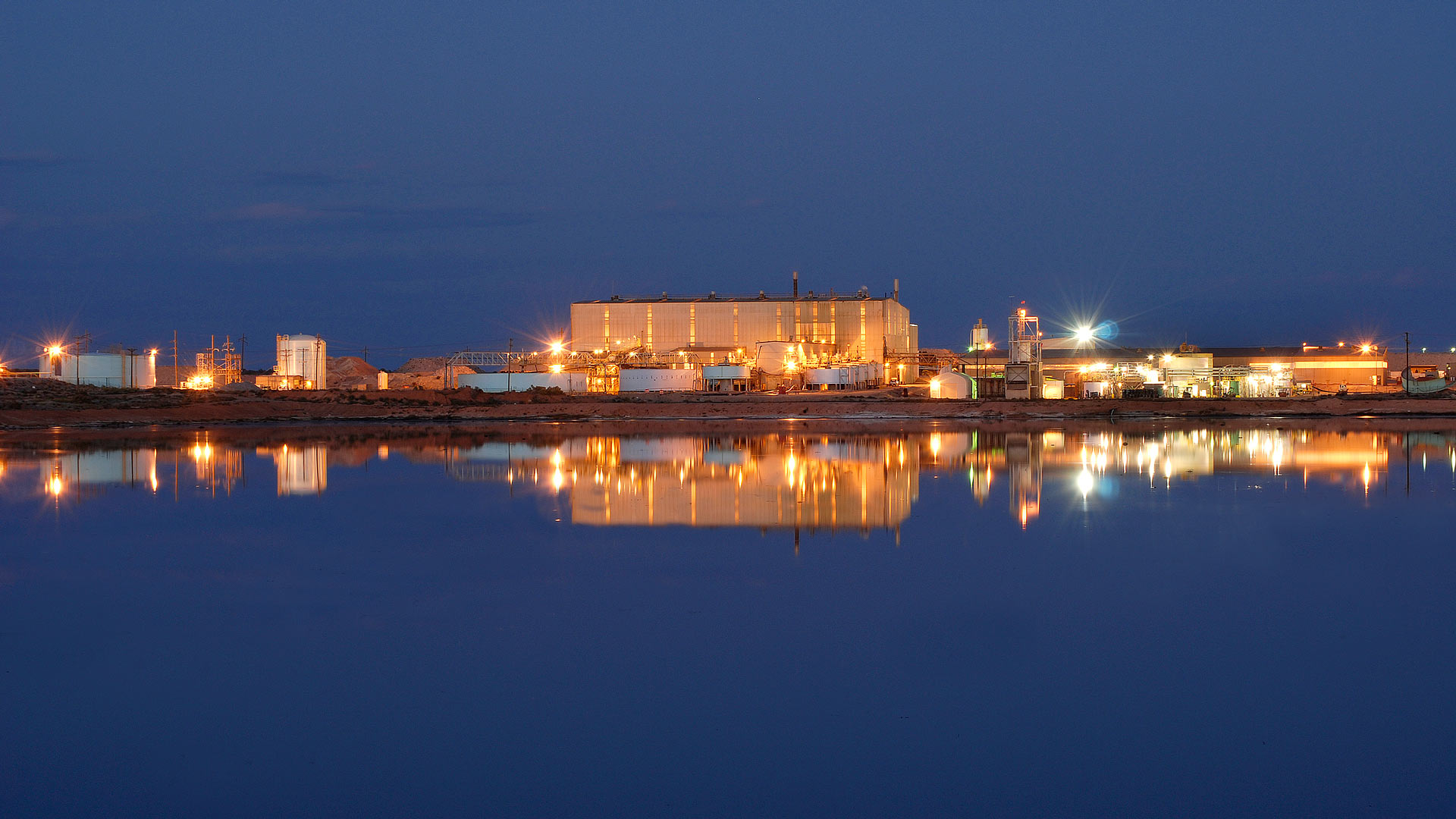Congressional staffers gathered for a talk on nuclear weapons and nonproliferation as part of the ANS Nuclear Energy 101 program.
Class was back in session this spring when, after a hiatus, the American Nuclear Society hosted its third session of Nuclear Energy 101 in Washington, D.C., for congressional staffers. This five-course educational series is a wonderful—and popular—tool for ANS to network with congressional staff and explain the basics of nuclear science and technology.
Energy Fuels’ White Mesa Mill in southeastern Utah is the only operating conventional uranium mill in the United States. (Photo: Energy Fuels)
The bipartisan Nuclear Fuel Security Act (NFSA), introduced in the Senate last week, would authorize the Department of Energy to establish a Nuclear Fuel Security Program to “ensure a disruption in Russian uranium supply would not impact the development of advanced reactors or the operation of the United States’ light water reactor fleet.” The bill was introduced by Sen. Joe Manchin (D., W.V.), chairman of the Senate Energy and Natural Resources (ENR) Committee; Sen. John Barrasso (R., Wyo.), ranking member of the Senate ENR committee; and Sen. Jim Risch (R., Idaho).
A rendering of the Clinch River breeder reactor project.
DISCLAIMER: The views expressed in this article are those of the author and do not necessarily reflect the views of the American Nuclear Society.
To provide a place for constructive conversation and exchange of ideas, I have built the website lmfbr.com. There, interested persons will find a description of the liquid metal fast breeder reactor technology and an outline of its history. The site is intended for an audience already generally familiar with light water reactors—but most particularly, it is meant to encourage comments so that the community can identify a pathway for deployment of LMFBRs through a conceptual design and institutional approach that draws upon collective experience, recent innovation, and re-visitation of approaches previously considered that have been long lying dormant. The website is also intended to suggest areas where further creative thought could be directed to improve the economic and operational performance of the LMFBR concept to make it highly competitive with LWRs.
The cover of the May 1977 issue of Nuclear News (left), an image of the story discussing Carter's decision to cancel the breeder reactor program (center) and the cover of the June 1977 Nuclear News (right).
The ANS Fuel Cycle and Waste Management Division will present a webinar today at noon EST (the recording will be available via the webinar archive to all ANS members) featuring an international panel of experts on nuclear waste reprocessing. The panel will explore the idea of separating certain radionuclides from waste using recycling technology that enables pure materials to be used for other purposes.
(Source: Peter Schrank/The Economist)
“Where nuclear power was once a source of unity for Europe, today it is a source of discord.” So states The Economist’s October 30 “Charlemagne” column—a regular source of commentary on European politics in the weekly publication—before deftly dissecting nuclear power’s continental divide and picking a winner.






 One of the biggest challenges in the nuclear community identified by ANS in 2017 is the continuous availability of radioisotopes. Working to meet that challenge is the ANS-led Source Security Working Group (SSWG), an alliance of industry sectors—including energy, health care, and industrial radiography—that seeks to ensure continued access to radiological sources. The SSWG serves as a strong voice to protect the continued availability of radiological sources, ensuring that laws and policies are risk informed, science based, and support the highest levels of public health and safety.
One of the biggest challenges in the nuclear community identified by ANS in 2017 is the continuous availability of radioisotopes. Working to meet that challenge is the ANS-led Source Security Working Group (SSWG), an alliance of industry sectors—including energy, health care, and industrial radiography—that seeks to ensure continued access to radiological sources. The SSWG serves as a strong voice to protect the continued availability of radiological sources, ensuring that laws and policies are risk informed, science based, and support the highest levels of public health and safety. 





